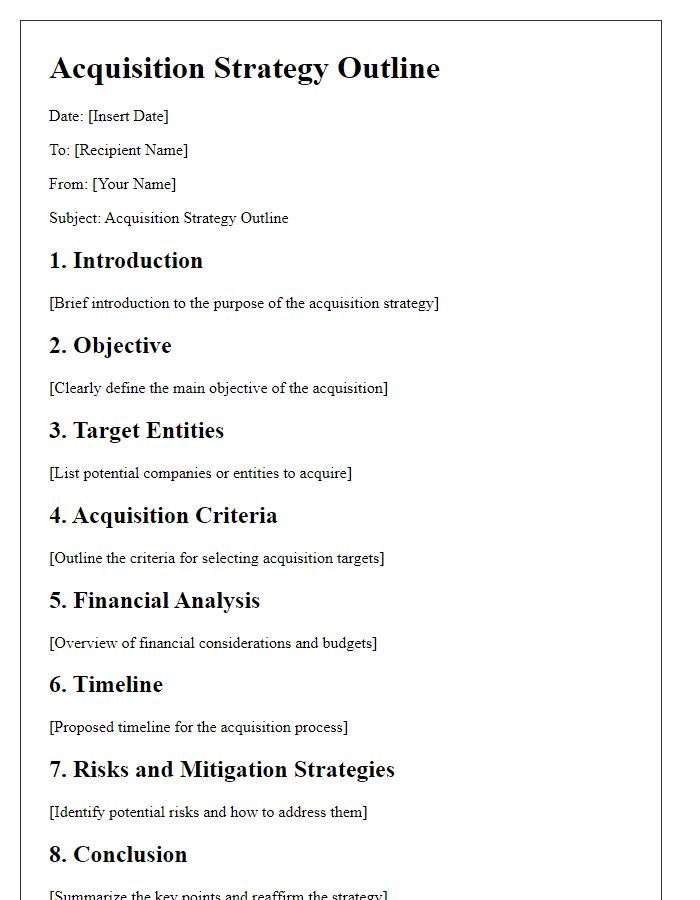In today's fast-paced business world, mergers and acquisitions are more common than ever, bringing exciting opportunities for growth and innovation. Knowing how to communicate these changes effectively can make all the difference in maintaining transparency and trust among stakeholders. This letter template aims to guide you through the essential elements needed for a clear and professional merger and acquisition correspondence. Curious to see how you can tailor your message for maximum impact? Keep reading!

Subject line clarity
Effective subject lines in merger and acquisition correspondence can convey critical information regarding the transaction. For instance, a clear subject line such as "Notice of Proposed Merger between Company A and Company B - Due Diligence Required by April 15, 2024" provides immediate context, specifying the involved parties (Company A and Company B), the nature of the correspondence (Notice of Proposed Merger), and an important timeline (Due Diligence Required by April 15). This precision ensures that recipients understand the urgency, relevance, and next steps, facilitating streamlined communication throughout the merger process and enhancing organizational alignment among stakeholders. Additionally, using concise language helps prevent confusion and ensures that essential details are not overlooked in a fast-paced transaction environment.
Personalization
A successful merger and acquisition process necessitates personalization to build strong relationships between the involved companies. Tailored communication can significantly enhance connection, addressing key stakeholders such as executives, employees, and investors. Personalized messages could mention specific objectives of the merger, financial incentives, and anticipated benefits that resonate with the audience. Incorporating names, roles, and even previous collaborations pays tribute to shared history and mutual respect. Utilizing specific examples from the companies' achievements can further underline the potential synergies expected from the merger, such as increased market share in targeted regions or expanded product lines. By prioritizing personalization, communication fosters trust, mitigates uncertainties, and lays the groundwork for a successful integration strategy.
Legal compliance
Legal compliance during mergers and acquisitions involves adhering to various regulations and laws that govern the transaction process. Regulatory bodies such as the Securities and Exchange Commission (SEC) in the United States require detailed filings to ensure transparency and protect shareholders. Antitrust laws, enforced by agencies like the Federal Trade Commission (FTC), prevent anti-competitive practices and may require review of proposed mergers exceeding certain thresholds, often measured in millions of dollars. There are international considerations as well, such as the European Union's stringent Merger Regulation, which assesses the impact of transactions on market competition within member states. Compliance also includes due diligence procedures, where both parties meticulously evaluate legal documents, contracts, and potential liabilities to mitigate risks associated with the acquisition or merger. Successful legal compliance not only safeguards against future litigation but also fosters trust among stakeholders involved in the transaction.
Detailed transaction summary
A successful merger and acquisition (M&A) transaction involves various critical elements that require clear communication between the involved parties. The transaction summary should outline the key components such as the purchase price, which may be valued at millions or billions of dollars, depending on the companies' financials. Include details about the target company, for instance, its revenue figures, employee count, and market position, in order to provide context for the acquisition's strategic rationale. Highlight the structure of the deal, which can include stock purchases or asset acquisitions, along with potential financing methods like equity, debt, or hybrid arrangements. Additionally, discuss any regulatory approvals required from governing bodies, such as the Federal Trade Commission in the United States. Reference potential timelines for the transaction process, indicating key milestones such as due diligence and closing dates. Finally, outline the expected synergies associated with the merger, emphasizing enhanced operational efficiencies, expanded market reach, and improved product offerings for both entities involved.
Clear next steps
A successful merger and acquisition process requires clear communication regarding next steps for all parties involved. Investors and stakeholders should receive detailed timelines, outlining critical dates such as due diligence completion (typically 30 to 90 days), regulatory approvals required by government agencies like the Federal Trade Commission (FTC) or the Securities and Exchange Commission (SEC), and the announcement date for both companies. Key personnel from both organizations must collaborate to create an integration plan, addressing issues like workforce consolidation, cultural alignment, and technology unification. Regular updates, such as weekly briefings, should be scheduled to keep all stakeholders informed and engaged throughout the transition period. Additionally, communication strategy should include methods for addressing employee concerns, such as town hall meetings or internal newsletters, ensuring a smooth transition for both employees and customers.













Comments